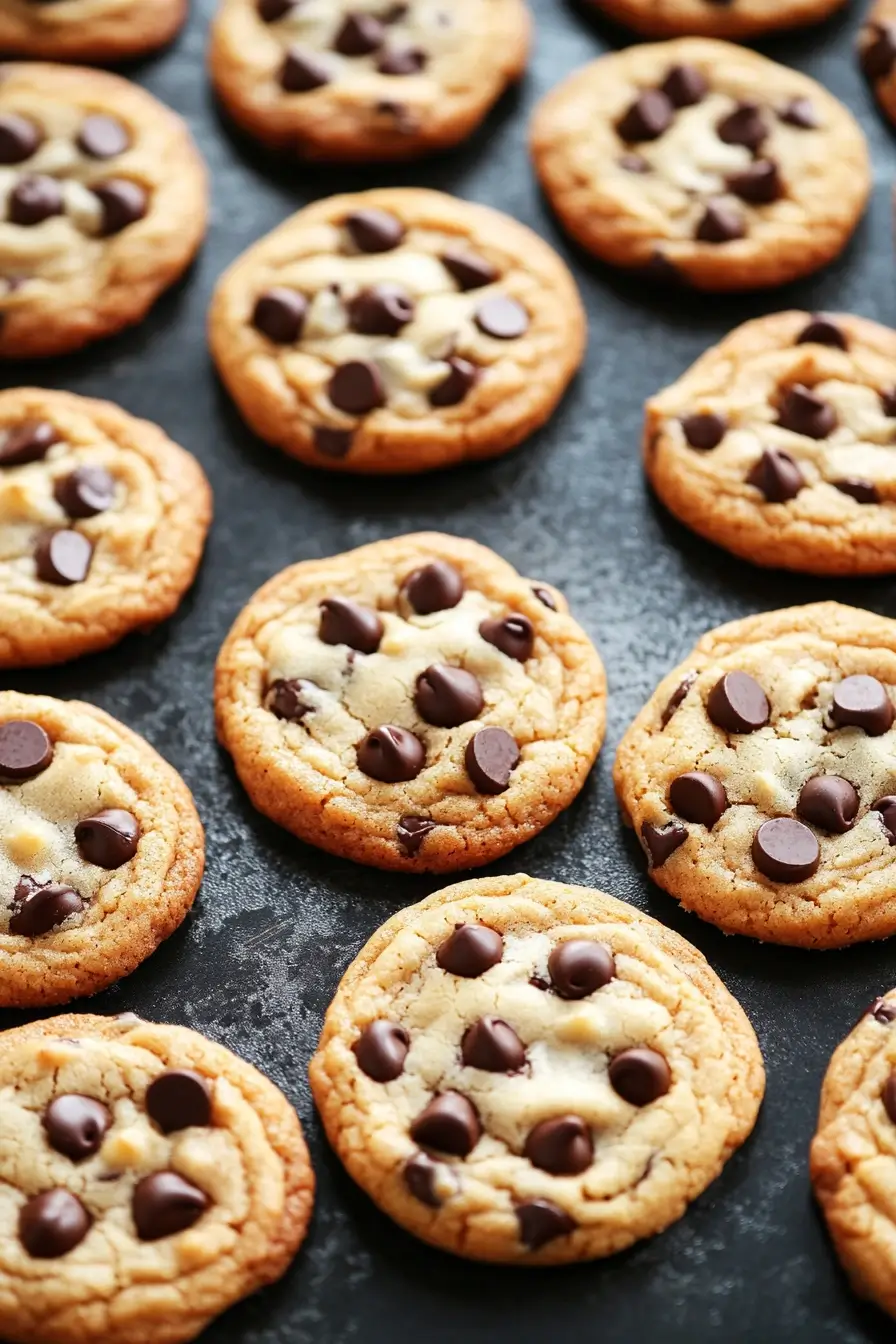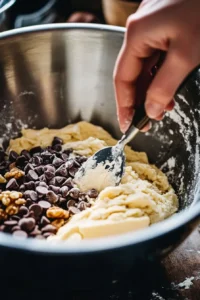Ah, the Toll House cookie recipe—it’s more than just a formula; it’s a delightful journey through the sweetest parts of baking history. This iconic recipe has not only stood the test of time but also embedded itself in the hearts of cookie lovers everywhere. In this comprehensive guide, we’ll delve into every nook and cranny of this beloved recipe. From the essential ingredients that make these cookies a household name to a variety of twists that can add a dash of excitement to your baking day, we’ve got you covered. Let’s get our hands doughy, shall we?
Introduction to Toll House cookie recipe
A Brief Stroll through Cookie History
Did you know that the Toll House cookie recipe came about almost by accident? Back in the 1930s, Ruth Wakefield, the owner of the Toll House cookie recipe Inn in Massachusetts, decided to throw bits of chocolate into her cookie dough, hoping they would melt and spread throughout. Instead, they held their shape, and voilà! The chocolate chip cookie was born. This delightful mishap has led to countless batches of cookies worldwide and a recipe that has been passed down through generations.
The Cultural Impact of a Simple Cookie
It’s fascinating, really, how a simple mix of butter, sugar, and chocolate has captivated so many. These cookies have become a cultural icon in America, symbolizing home, warmth, and sweet indulgence. They’re not just treats; they’re an experience, shared across tables and generations.
Why This Recipe Has Stood the Test of Time
Let’s be real—the Toll House cookie recipe isn’t just beloved for its taste. Its simplicity and the joy it brings to both bakers and eaters have cemented its place in baking lore. Whether it’s a holiday, a party, or a quiet night in, these cookies always seem to fit the bill.
Nutritional Insights into Toll House cookie recipe
Understanding What Goes into Each Bite
While indulging in a Toll House cookie is a delightful treat, it’s also useful to know just what nutritional content you’re enjoying with each bite. Here’s a breakdown that can help you savor each cookie with a bit more awareness.
Calories and Macronutrients
- Caloric Content: Each cookie typically contains about 80-100 calories, depending on size and additions like nuts.
- Fats: There’s no skirting around it; these cookies are rich in fats due to butter and chocolate, contributing to their irresistible texture and flavor.
- Carbohydrates: Primarily from sugars and flour, carbs give these cookies their energy-boosting potential.
- Proteins: While not a significant source, the eggs and nuts do offer some protein, which is vital for body repair and growth.
The Sweeter Side of Things
- Sugars: Both granulated and brown sugars not only sweeten these cookies but also affect their texture. While delicious, it’s wise to consume them in moderation, as with all sweet treats.
Vitamins and Minerals
- Micronutrients: Depending on the ingredients used, such as nuts, you might get a boost of minerals like magnesium and selenium. Eggs provide vitamins like B12 and D, which are crucial for energy metabolism and bone health, respectively.
Making Healthier Choices
For those who are mindful of their intake but still want to indulge:
- Reducing Sugar: Consider reducing the sugar amounts slightly to lower the caloric impact without significantly affecting the taste.
- Swapping Ingredients: Use whole wheat flour instead of all-purpose for an increase in fiber and nutrients. Additionally, opting for dark chocolate chips can decrease sugar and increase antioxidants.
Expert Tips for Perfect Toll House Cookies
Achieving Cookie Perfection
Every baker strives for that ideal batch of cookies—perfectly crisp edges with chewy centers and just the right amount of chocolate. Here are some expert tips to help you achieve baking greatness with your Toll House cookies.
The Importance of Ingredient Quality
- Butter Is Better: Use high-quality butter for richer flavor and better texture. Ensure it’s softened to room temperature for optimal creaminess.
- Freshness Counts: Ensure your baking soda and flour are fresh for the best results. Stale leavening agents can lead to flat, dense cookies.
Mixing Matters
- Don’t Overmix: Stir your dough until the ingredients are just incorporated.. Overmixing can lead to tough cookies because of gluten development in the flour.
- Uniformity: Make sure your cookie sizes are uniform. This ensures even baking and perfect doneness for every cookie.
Baking Basics
- Oven Accuracy: An oven thermometer can be a game-changer. Even a few degrees off can significantly affect your baking results.
- Parchment Paper: Use parchment paper on your baking sheets to prevent sticking and ensure easy removal without breaking your cookies.
- Proper Spacing: Give your cookies enough space to spread. Crowding too many on one sheet can lead to uneven baking.
Post-Baking Tips
- Cooling: Let cookies cool on the baking sheet for a couple of minutes before transferring them to a cooling rack. This slight cooling helps them set without becoming too hard.
- Storage: Store cookies in an airtight container to keep them chewy and fresh.Place a layer of parchment or wax paper between them to avoid sticking.
By integrating these expert baking tips into your cookie-making routine, you’re not just baking; you’re crafting culinary delights that showcase your skills and passion. Whether you’re a seasoned baker or just starting out, these insights are sure to improve your cookie outcomes, making your Toll House cookies the talk of any gathering.
FAQs About Toll House cookie recipe
Why Are My Toll House Cookies Always Flat?
- The Usual Suspects: Flat cookies are often the result of butter that is too soft or partially melted before mixing. This can cause the dough to spread too much during baking.
- Measure and Mix: Ensure that your measurements, especially of flour and baking soda, are accurate. Under-measuring can lead to insufficient structure for the cookies.
- Chill Out: Consider chilling the dough for about an hour before baking to help it hold its shape better in the oven.
Why Is It Called a Toll House Cookie?
- A Sweet History: The name “Toll House” comes from the Toll House Inn, a popular restaurant in Whitman, Massachusetts, where Ruth Wakefield invented the recipe in the 1930s. The cookies were originally called “Toll House Crunch Cookies.”
What Are the Ingredients in Toll House Cookie Dough?
- The Classic Lineup: The essential ingredients include all-purpose flour, baking soda, salt, butter, granulated sugar, brown sugar, vanilla extract, eggs, NESTLÉ® TOLL HOUSE® Semi-Sweet Chocolate Morsels, and optional nuts.
- The Right Ratios: Keeping the balance of wet to dry ingredients helps in achieving the perfect texture and flavor.
Is it necessary to refrigerate Toll House cookie dough before baking?
- To Chill or Not to Chill: Refrigerating cookie dough before baking is not mandatory, but it can help in managing the spread of the cookies during baking. Cold dough takes longer to melt and thus spreads less.
- Enhanced Flavors: Chilling can also enhance the flavors as it allows the ingredients to meld together more harmoniously.




1 thought on “Toll House Cookie Recipe: A Classic Baking Guide”